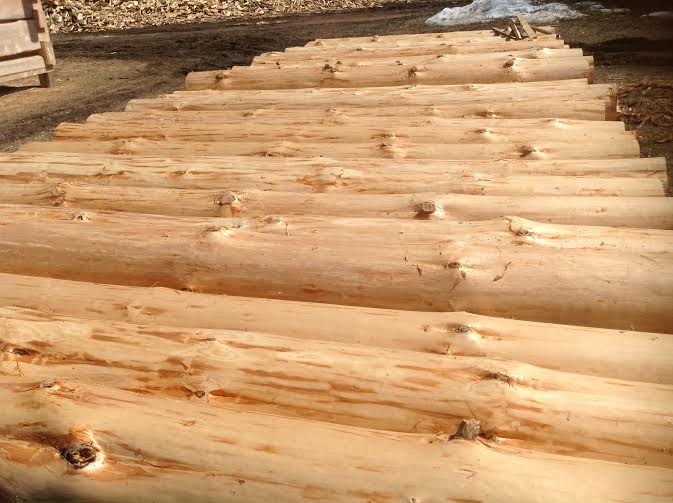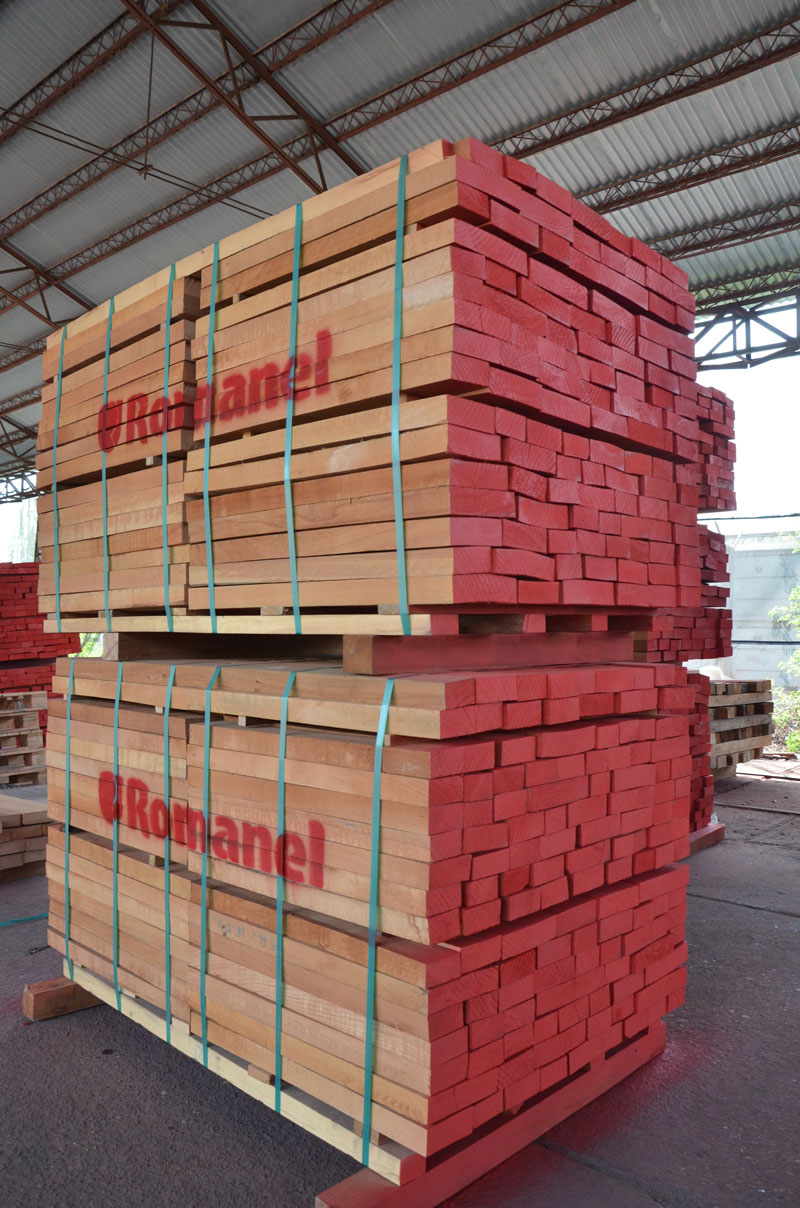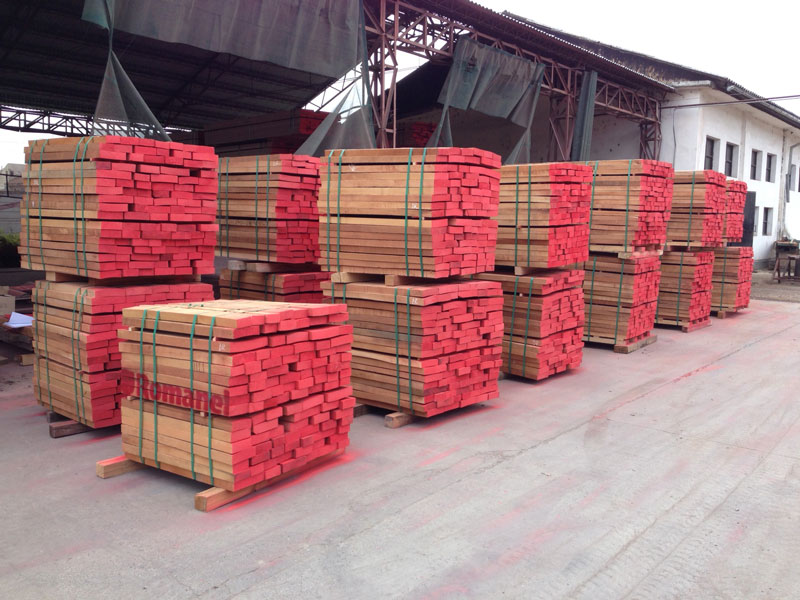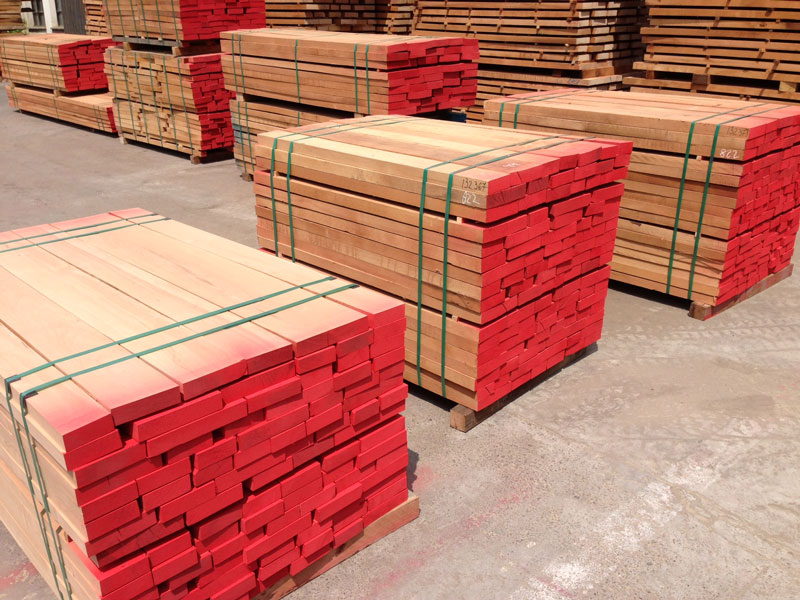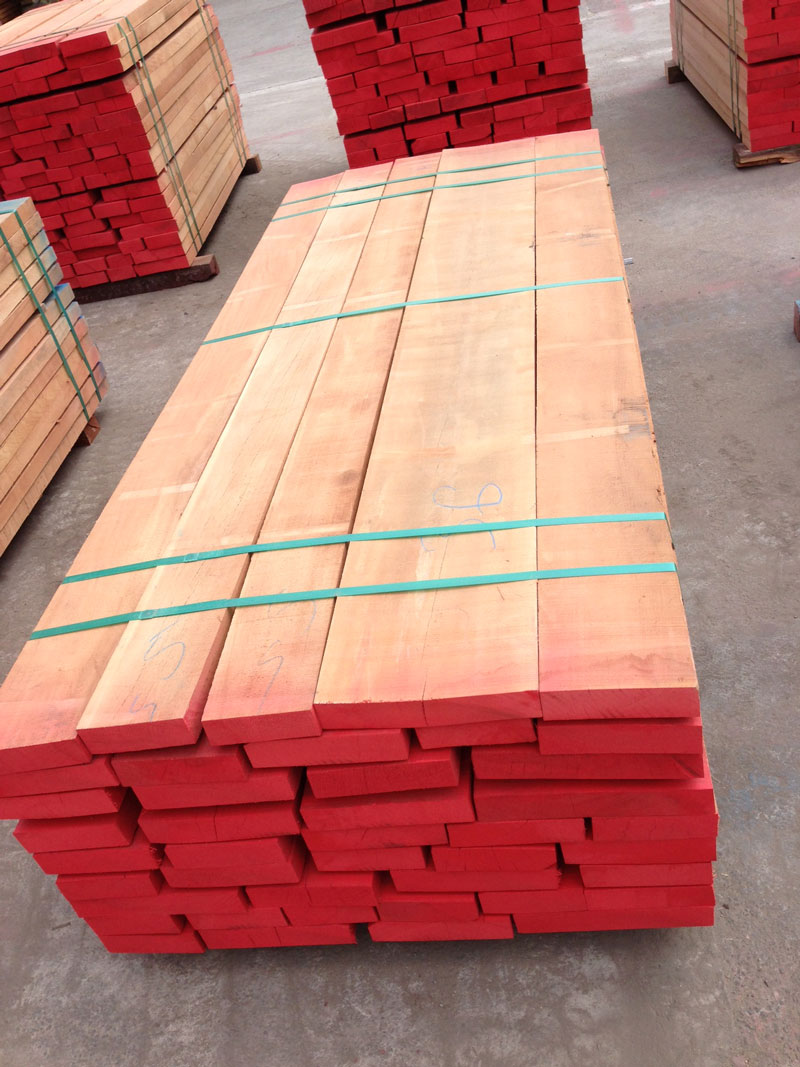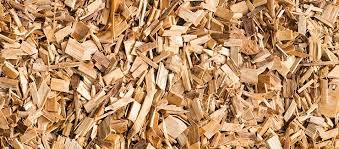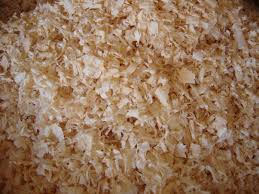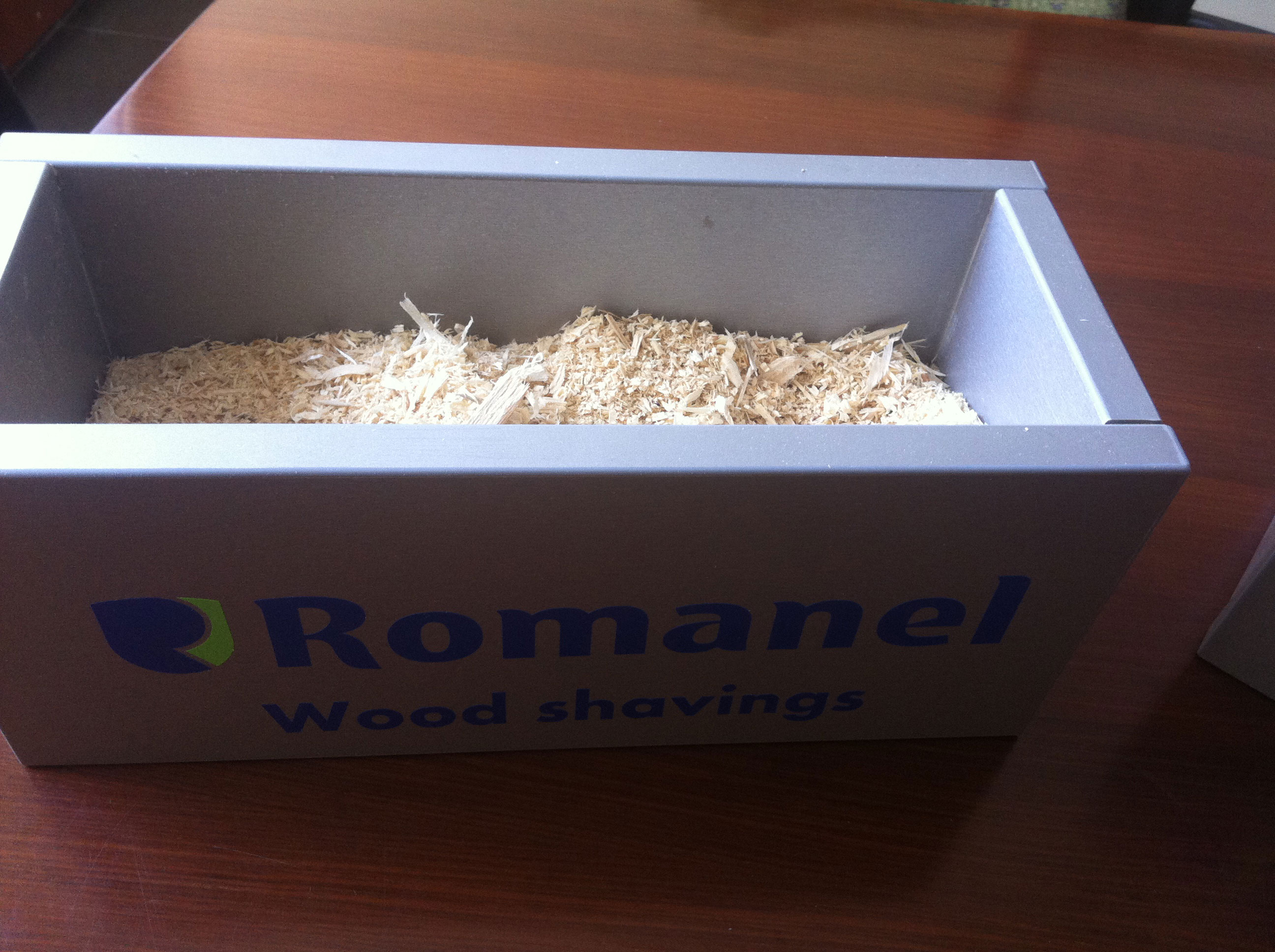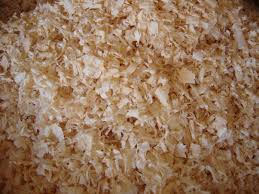
-
Description
All our whitewood is from high quality Romanian fir/spruce. It is 18-20° KD or according to customer specifications. • Thicknesses: from 16 mm to 96 mm
• Widths: 48 mm to 300 mm
• Lengths: 3 m - 4 m -
Products on request
• Short lengths: 1 m to 2.75 cm every 25 cm
• Long lengths:4m to 4.5m
-
Superior
• Superior is Romanel's top quality grade, cut to maximize the proportion of large widths while obtaining long lengths.
• Applications: mouldings, long plank flooring, cabinet doors, table tops and luxurious joinery
-
Furniture
• Furniture is a highly economical grade for those requiring predominantly large widths and can balance with the use of long, medium and short lengths
• Applications: small furniture elements, stairs, drawer fronts/sides, flooring, finger joints and cabinet components
-
For both
• Kiln drying
• Steaming
• Thicknesses: 25 mm, 26 mm, 38mm, 40 mm, 50mm, 60mm, 70mm, 75 mm and 80mm
• Widths: 100 mm and wider (special requests possible)
• Lengths: 1.8 m to 4.50 m every 10 cm, length packed (LP)
-
Products on request
• Fixed widths bundles
• Narrow widths bundles
• Unedged / Boules
• Special kiln drying
• Knife planing
• Short lengths: 1.0 m to 1.7 m every 10 cm, LP
• Very short lengths: 0.50 m to 0.95 m every 5 cm
-
Description
Bark chip is shredded or chipped tree bark used for mulch. This by-product of the timber production is important to the horticultural industry since it is used for plants that do not thrive in ordinary soil.
-
Description
Chips are a medium-sized solid material made by cutting, or chipping, larger pieces of wood. They may be used as a biomass solid fuel and are raw material for producing wood pulp or wood panels. They may also be used as organic mulch in gardening, textiles, landscaping, restoration ecology and mushroom cultivation.
-
Description
Pulp is one of the most abundant raw materials worldwide. It is most commonly used as raw material in papermaking, but also in textiles, food, pharmaceutical and many other industries as well.
-
Description
Sawdust or wood dust is a by-product of cutting, grinding, drilling, sanding, or otherwise pulverizing wood with a saw or other tool; it is composed of fine particles of wood.
Sawdust is the main component of particleboard. It has a variety of other uses, including serving as a fuel. Until the advent of refrigeration, it was often used in icehouses to keep ice frozen during the summer. It has been used in artistic displays, and as scatter.
Sawdust is also used in the manufacture of charcoal briquettes and pellets.
-
Description
Our pellets are a cost-effective, renewable way to heat homes or commercial buildings that is also environmentally smart.
Made solely of spruce, suitable for domestic use
These pellets comply with the requirements of the handbook for the certification of wood pellets for heating purposes of the European Pellet Council (EPC) in accordance with EN 14961-2, DINplus and ENplus.
Characteristic Value Certification Requirement Species 100% Spruce / Fir - Diameter from 6 to 6.5 mm from 5 to 9 mm Length from 10 to 25 mm from 3.15 to 40 mm Bulk Density about 679 kg / m3 over 600 kg / m3 Moisture Content from 7.00% to 8.00% less than 10.00% Mechanical Durability 99.60% more than 97.50% Calorific Values about 5.2 kWh / kg between 4.8 and 5.4 about 4,500 Kcalh / Kg between 4,000 and 5,000 about 17,400 MJ / Kg between 16,500 and 19,000 Residual Ashes about 0.50% less than 0.70% Content of Fine Particles about 0.15% less than 1.00% Additives about 0.40% less than 2.00% Nitrogen Content about 0.14% less than 0.30% Sulfur Content about 0.005% less than 0.03% Softening Temperature 1,250 C over 1,200 C Packing In plastic bags of 15 Kg - Packaging 65 bags on disposable pallets - Recommended Storage Period 1.5 years -
-
Description
In a bid to promote the wisest use of our forest, we produce those thin curly wood shavings used for packing or stuffing.
-
Description
The choice and use of the bedding is as important as the choice of a good saddle. Our horse bedding protects the horse, more than any other horse bedding.
-
What is good horse bedding?
Each horse owner has his own preferences: some people prefer a certain bedding because of the smell of the cedar sawdust, while others choose to use straw, and others prefer peat, which has a great absorption capacity although a fervent ecologist would not be very pleased by this choice.
The specialists from the Equine Research Center in Ontario, Canada, have carefully analyzed five different types of bedding. The most relevant characteristic subject to study was the absorption of humidity, as it has a fundamental role in preventing mold forming and ammonia binding which irritate the air passages, provoking serious air passages diseases. A good bedding is free of particles and contains very little or no dust, as this can cause problems for the air passages. It is also important that the bedding, mixed with manure, can easily be cleaned, considering, if the bedding is thick and heavy, it tends to stick, making the cleaning operations all the more difficult.
-
Why is bedding made of wood residues the best?
Paper has the best characteristic relating to humidity absorption, providing the best protection for horses against ammonia, which, besides having an unpleasant smell, is also a health risk. Paper bedding is also very advantageous in dealing with mold, but only if the bedding is always discarded with the manure. However, nobody associates breeding horses with paper bedding, as the capacity of paper to absorb water adds additional weight to the bedding.
As the weight of paper increases by 900% when wet, the changing of the bedding would turn into a very difficult task. In contrast with this type of bedding, the rest of them are lighter, although their humidity absorption capacity does not come close to that of paper. The weight of hemp fibers increases by 400%, that of peat by 300% and that of sawdust by 250%. This is the reason why the majority of people use sawdust as animal bedding.
If we only analyzed the issue of the mold, its presence and its quantity, nobody would choose straw any longer, because they represent the perfect environment for its development. The largest quantity of mold appears in hay or straw during the binding of bales. It extends further if the straw is stored in humid places. Inexperienced people think they can evaluate the humidity of bales according to their smell. This is completely useless, because, as far as straw is concerned, one thing is for sure: they contain mold spores.
Horses or cattle may eat their hay or straw bedding as if it were a dessert, but this shall not be considered a tragedy if the quantity that was consumed is not extremely large. However, this may become a problem if the animal systematically eats half of its bedding, because water consumption will consequently increase as well. Digestion problems may ensue, as horses also have their limits.
Bedding made of wood residues, combined with our state of the art technology, has the advantage of paper (in it absorption capacity), of sawdust (in its weight) and does not have the disadvantage of straw as mold does not develop in it. Finally, this product is free of dust and bacteria, and thus is the best animal bedding possible.
The packaging makes it easy to transport, as it comes in bags of 20 kg on pallets of 30 bags.
-
Description
Composition: Coniferous sawdust
Shape: RUF type blocks held by intense compaction without any glue or binderCalorific value: Min. 4.4 kcal/kg
Dimensions: 155mm x 65mm x 85mm
Moisture content: Less than 8%
-
Weight
Briquette : 0.83 kg
Pack: Contains12 briquettes and weights 10 kg (+/- 5%) Pallet: Contains 720 briquettes and weights 600kg (+/- 5%) -
Usage
• Stoves, tiled stoves, fireplaces and boilers
• Briquettes can be used when starting a fire from scratch or re-igniting one on an existing bed of coals
• Ash produced from burning briquettes makes an excellent lawn or garden fertilizer
-
Warning
Store in a dry place away from moisture
-
Description
Premium Whitewood Tongue&Groove
High quality grading standards - Spruce
- Wall panneling profile boards
- Flooring panels
-
Description
Beams
Wood species: Pine




